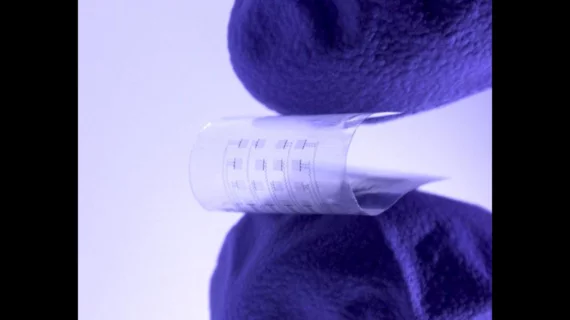New dissolvable heart monitors could help cardiologists battle AFib
Researchers have developed new heart monitors that dissolve inside the body when they are no longer needed, sharing their work in Science Advances.[1]
The new-look devices are soft, flexible, transparent and roughly the size of a postage stamp. The goal is to implant the device following a significant cardiac event or procedure so that it can restore normal heart rhythms, like a pacemaker, and stream data directly to the patient’s physicians. It can then be left to dissolve, helping patients avoid going through an additional procedure and saving healthcare providers the costs of extraction.
While the device is still in the development stage—it has been tested on small animals, but no human patients—researchers sound quite happy with their progress so far.
“Several serious complications, including atrial fibrillation and heart block, can follow cardiac surgeries or catheter-based therapies,” study co-lead author Igor Efimov, PhD, an experimental cardiologist with Northwestern University, said in a prepared statement. “Current post-surgical monitoring and treatment of these complications require more sophisticated technology than currently available. We hope our new device can close this gap in technology. Our transient electronic device can map electrical activity from numerous locations on the atria and then deliver electrical stimuli from many locations to stop AFib as soon as it starts.”
“Many deaths that occur following heart surgery or a heart attack could be prevented if doctors had better tools to monitor and treat patients in the delicate weeks and months after these events take place,” added co-lead author Luyao Lu, PhD, an assistant professor in the department of biomedical engineering at George Washington University. “The tool developed in our work has great potential to address unmet needs in many programs of fundamental and translational cardiac research.”
Read the full analysis here.

